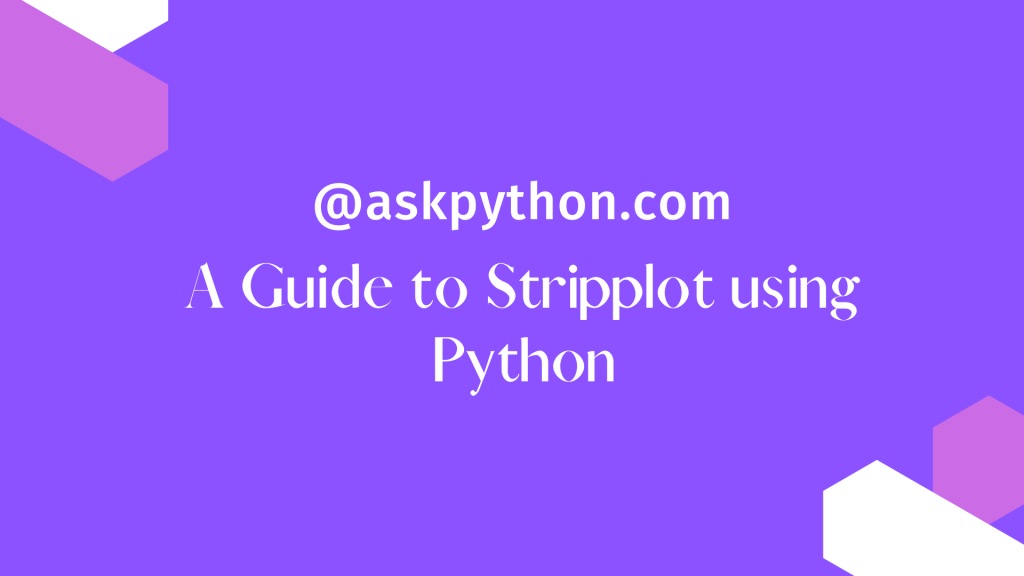Hey coders! Today in this tutorial, we would be exploring the Seaborn stripplot() method in Python. Let’s get started!
Introduction to Seaborn stripplot()
Seaborn is a fantastic Python visualization tool for statistical graphics charting. It has nice default styles and color palettes to make statistics charts more appealing. It is designed on top of the matplotlib software and is tightly connected with pandas data structures.
A strip plot is created entirely on its own. In circumstances when all data are given together with some representation of the underlying distribution, it is a nice complement to a boxplot or violinplot. It is used to generate a scatter plot depending on a category.
Using the Seaborn stripplot() method in Python
Let’s get into the coding part now. I’ll demonstrate this method with a really simple example below so you have an understanding. You can explore the method further from there and learn more from the official documentation for more advanced use-cases.
Import necessary modules/libraries
import seaborn
import matplotlib.pyplot as plt
plt.style.use("seaborn")
Load Dataset
The Tips dataset is one of the sample datasets included with the seaborn package, and it is used in the documentation of the seaborn package. It may be readily imported using the seaborn load dataset command.
tips = seaborn.load_dataset("tips")
Basic visualization
Let’s draw a strip plot with the tips dataset, that compares sex and total_bill paid by them.
plt.figure(figsize=(10,10))
seaborn.stripplot(x="sex", y="total_bill", data=tip)
plt.show()

Draw outlines around the data points
The width of the grey lines frames the plot parts. When we raise the linewidth, the point likewise increases automatically.
plt.figure(figsize=(10,10))
seaborn.stripplot(y="total_bill", x="sex", data=tips,linewidth=2,size=10)
plt.show()

Using hue parameter
While the points are plotted in two colors, a third variable may be used to provide an additional dimension to the plot by coloring the points.
plt.figure(figsize=(10,10))
seaborn.stripplot(x="sex", y="total_bill", hue="day", data=tips,size=10)
plt.show()

Using marker and alpha parameter
We’ll use alpha to control the transparency of the data point and marker for the marker to modify it.
plt.figure(figsize=(10,10))
seaborn.stripplot(x="sex", y="total_bill", hue="smoker", data=tips,size=15,marker="*",alpha=0.5)
plt.show()

Conclusion
Congratulations! You just learned how to plot strip plots in Python using the seaborn library. Hope you enjoyed it! 😇
Liked the tutorial? In any case, I would recommend you to have a look at the tutorials mentioned below:
- Plot Mathematical Functions – How to Plot Math Functions in Python?
- Plot data from Excel Sheet using Python
- Python: Plotting Smooth Curves
- Python Plot: Create Animated Plots in Python
Thank you for taking your time out! Hope you learned something new!! 😄
